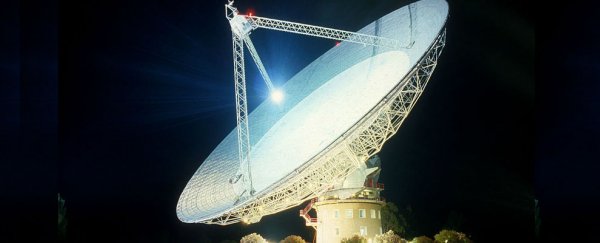For 17 years, scientists at the Parkes telescope in central-west NSW were perplexed by a mysterious interference they were picking up. The researchers had been detecting signals called perytons "within 5km" of the observatory since 1998, CSIRO astrophysicist, Simon Johnston, told The Guardian.
Named after a mythological hybrid beast with the wings of a bird and the head of a stag, perytons are short radio signals that last for just a few milliseconds, and are thought to originate from phenomena down on Earth. The ones Parkes picked up, observed just once or twice a year, were assumed to be caused by lightning strikes.
"We were getting some strange signals that appeared to be coming from very nearby," Swinburne University PhD student, Emily Petroff, told the ABC.
These signals were so nearby, in fact, that they were being emitted onsite - and not from lightning strikes, but from the staff kitchen microwave. "It was kind of a surprise to all of us," said Petroff.
The mystery was solved when a new receiver was installed at the observatory earlier this year, which picked up strong signals at a frequency of 2.4Ghz. Petroff says the perytons were only emitted if the telescope was pointed towards the microwave - and the microwave door was opened prematurely.
"It turns out that you can generate these particular local signals by opening the door of the microwave to stop the microwave, and that produces these weird bursts that we're seeing at Parkes," Petroff said of the findings, published in the Notices of the Royal Astronomical Society.
Love technology? Find out more about the innovative courses available at Swinburne University of Technology.
